Buoy 10 at Lower Columbia becomes the focal point for salmon anglers starting Aug. 1, plus many local fishing opportunities coming online Leave a reply
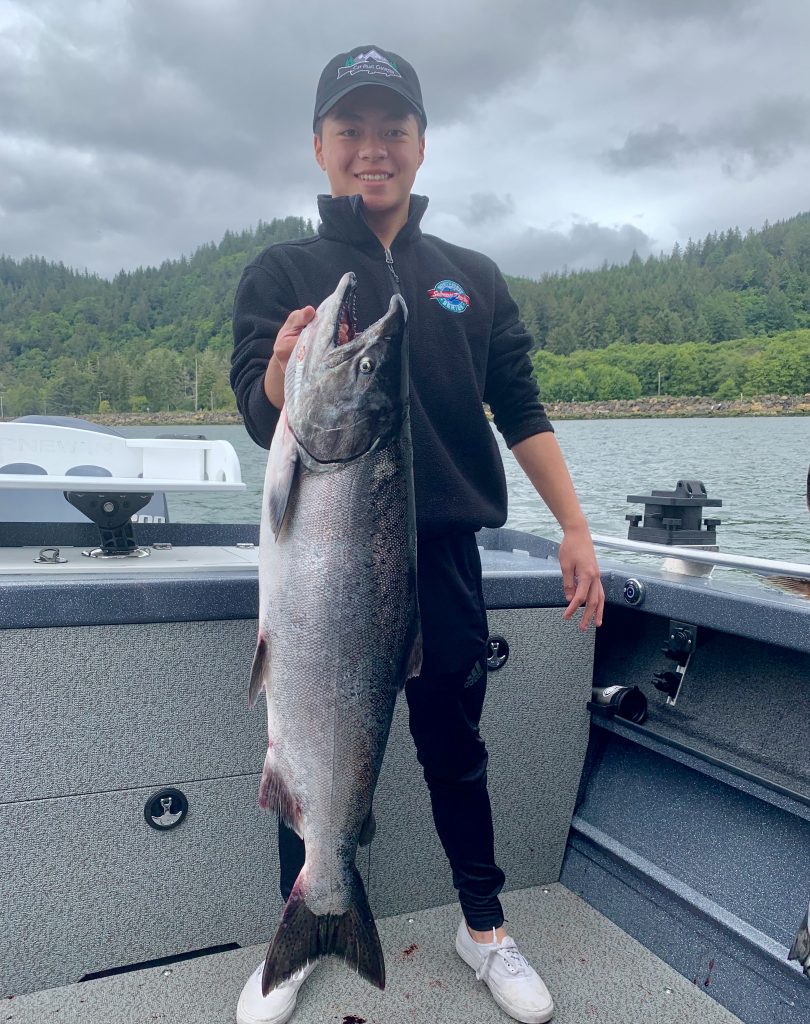
By Mark Yuasa
The adrenaline rush for many anglers happens in August when a bountiful run of fall chinook and coho begin to arrive in the Columbia River.
The centerpiece on the “Big-C” is around Buoy 10 – a 20-mile fishing area where the river’s brackish water meets the briny Pacific Ocean – and is the annual staging ground for millions of migrating salmon.
“Buoy 10 is definitely on the tops of places where I enjoy catching salmon,” said Austin Moser, owner of Austin’s Northwest Adventures Guide Service, who makes Astoria his home-away-from-home in Astoria during late summer. “It definitely ranks high on my list of places to fish each year.”
Buoy 10 is the red navigational marker located just outside of the Port of Ilwaco and is the western boundary that heads upriver to the Tongue Point-Rocky Point boundary line located above the Astoria-Megler Bridge.
An estimated fall chinook forecast of 580,800 fall chinook are expected to return off the Columbia mouth in 2021 compared to a forecast of 431,000 and an actual return of 574,700 in 2020. The bulk of the run is comprised of 354,200 upriver bright chinook (233,400 was forecast and 299,300 was actual return in 2020) which is 83 percent of 10-year average.
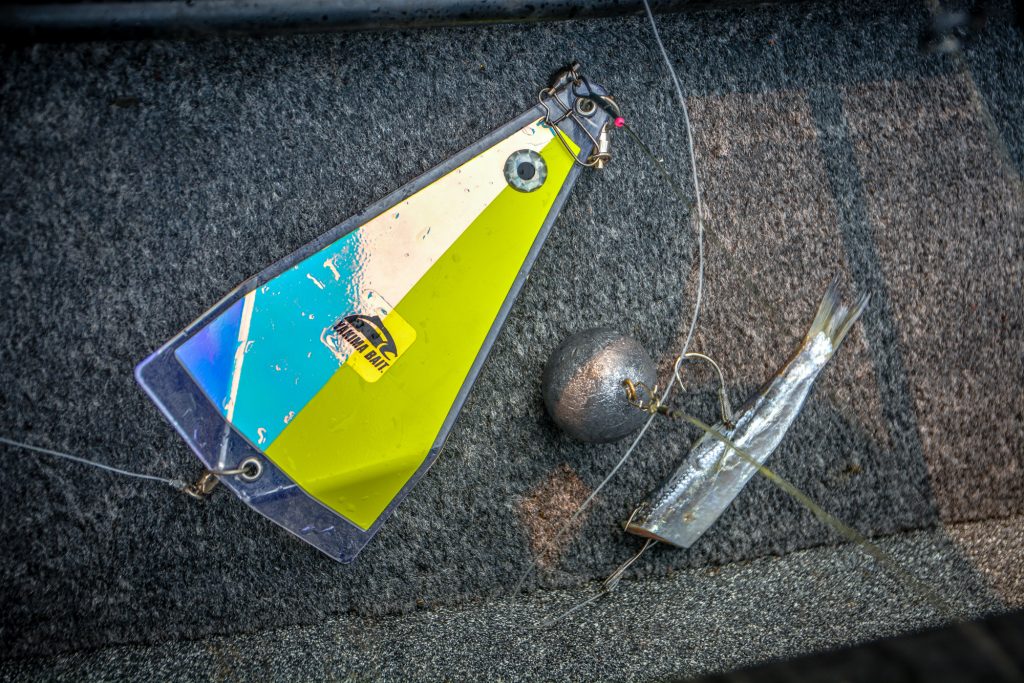
Coho are the bread and butter for Columbia fisheries, and could be the largest dating back to at least 2015 when the forecast was 1,015,000 and in 2014 when the forecast was 1,724,000. You’d have to go back to 2009 to find anything similar when the forecast was 1.2 million coho — actual return was about 1.05 million — and turned out to be a very productive ocean coho fishery season.
The Buoy 10 fishery will be open Aug. 1 through Sept. 6 for chinook with only hatchery-marked chinook allowed to be kept from Aug. 1-10. The daily adult limit is two salmon and no more than one chinook, and anglers must release wild chinook from Aug. 1-10 and wild coho the entire season. From Sept. 7 through Dec. 31, the daily adult limit is three salmon, but all chinook and wild coho must be released.
The ports of Ilwaco and Astoria are normally sleepy small coastal towns, but when August arrives, hordes of salmon anglers converge filling up the marinas, hotels and restaurants as it becomes a salmon hotbed.
Big floods tides are when anglers should be on the water as it pushes in fresh salmon from the ocean, but knowing where to be can be intimidating to the uninitiated.
An early morning flood tide is something to keep an eye on and those coming out of Ilwaco should make their first drop along the Wing Walls, a mess of old fishing cannery pilings. Salmon like to stage here in water 25 to 45 feet deep, but be aware it can be snaggy as you troll where sunken pilings will grab your lines.
The Desdemona Sands area located in the middle of the river above and below the Astoria-Megler Bridge is a mid- to late-flood tide show along a series of paths flanked by shallow sand bars.
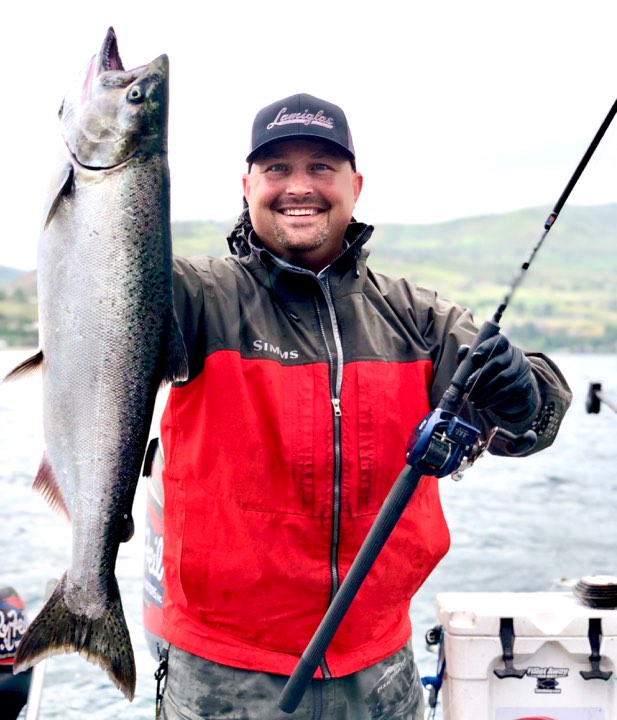
This long, sandy, underwater bar that is exposed at low tide is the divider where migrating chinook and coho salmon headed upstream into the channel need to choose whether to swim along the Washington or Oregon side.
Moser says when you fish on the smaller tides, fish tend to congregate from Desdemona Sands up to the Shipwreck and they don’t really move farther down the river compared to the bigger tidal influences.
The buoy line just off the town of Astoria where huge ocean-bound freightliners anchor up just above the bridge is another decent location during a flood tide change. Nearby many will also focus their fishing below the bridge and just off the Port of Astoria Marina.
On the Washington side just above the bridge are three long underwater channels just above the bridge along Highway 401 where salmon will move up and down depending on the tide. Schools of anchovy baitfish will sit in the channels as salmon pick them off while waiting to move upriver.
Other spots are the Church Hole off Fort Columbia State Park; from the Fort Stevens State Park on the Oregon side west toward Hammond. Buoy 10 itself isn’t a good place to fish but you can find good action there for coho.
If the ocean salmon season remains open off the southern coast (Area 1) in August (check the WDFW website at https://wdfw.wa.gov/), anglers have the option if Buoy 10 is slow to fish along the 30-foot line outside the surf-line at Long Beach just north of the Cape Disappointment Lighthouse.
This is a relatively easy place to fish when ocean conditions allow with anglers letting out 13 to 15 pulls of line (two feet per pull) attached to a diver or Fish Flash and a whole or cut-plug herring.
The best time off Long Beach is August as salmon stage before moving into the Columbia River, and it doesn’t matter on the tide or time of day as long as the fish are holding. On the surf line look on your depth-finder for huge anchovy baitfish schools although you need to watch out for commercial crab pots that can grab your fishing lines leading to a messy situation.
If the baitfish aren’t holding off Long Beach, then move out into the ocean about 7 to 10 miles to areas west of the CR Buoy at depths of 50 to 80 feet. The Ilwaco charter boat fleet are known to fish even further out along the 300-foot depth line.
There are plenty of bottomfish to catch so if the salmon are hard to come by you can head out near the jetties and pursue black rockfish, kelp greenling and lingcod or set some pots for Dungeness crabs.
Nibbles and bites
Locally, there are a myriad of marine areas still open for salmon fishing, and catches appeared to have increased this past weekend including more pinks showing up in the mix of coho and hatchery chinook.
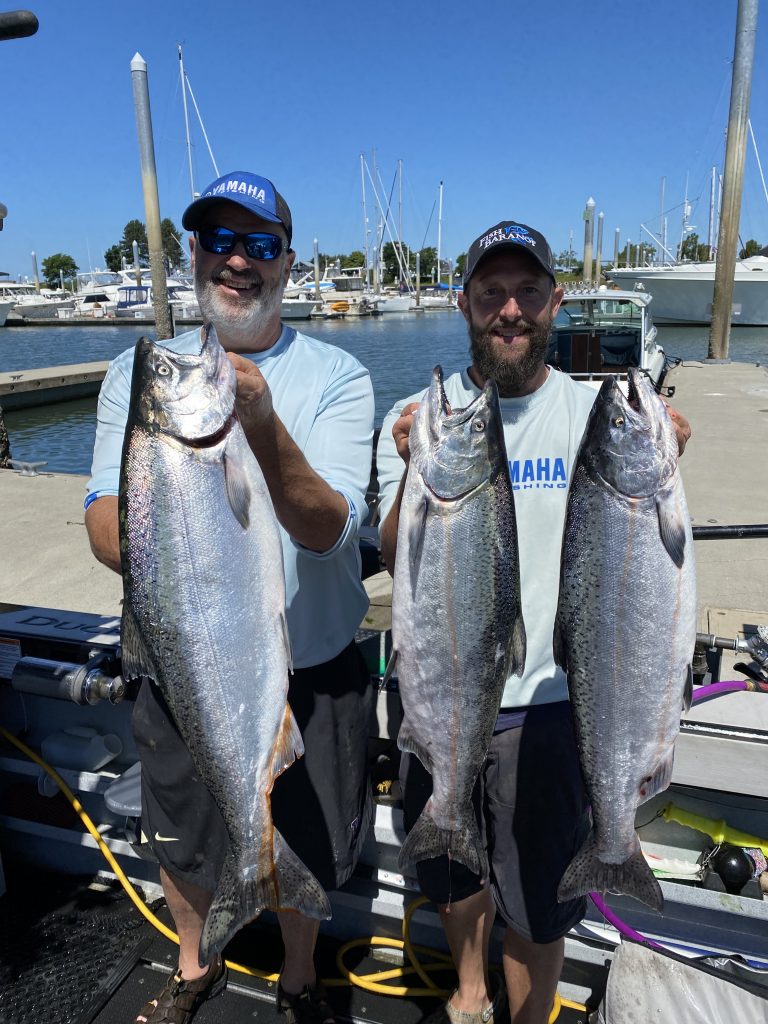
As of now Sekiu (Area 5) in the western Strait remains open for hatchery coho and pinks; and Port Angeles (Area 6) in the eastern Strait is open for hatchery kings and coho and pinks, but given the high effort and catch per unit effort WDFW will continue to closely monitor the fishery.
The San Juan Islands (Area 7) remains closed and it is unlikely, but not impossible it will reopen before September. Northern Puget Sound (Area 9) will continue to be closely monitored; and central and south-central Puget Sound (Areas 10 and 11) will both remain open for salmon fishing for now.
WDFW provided the latest catch rates through Thursday, July 22 for hatchery chinook fishing:
The eastern Strait (Area 6) catch showed 3,455 of the 6,843-hatchery chinook harvest quota or 67 percent total. The sub-legal encounter rate is 3,408 of the allowable 3,573 ceiling (95 percent) and the unmarked “wild chinook” encounter rate is 1,987 of the 2,158 ceiling (92 percent).
The northern Puget Sound (Area 9) catch showed 2,343 of the 4,700-hatchery chinook harvest quota or 50 percent total. The sub-legal encounter rate is 2,970 of the allowable 7,317 ceiling (41 percent) and the unmarked “wild chinook” encounter rate is 1,615 of the 2,110 ceiling (77 percent).
The central Puget Sound (Area 10) catch showed 250 of the 3,718-hatchery chinook harvest quota or 7 percent total. The sub-legal encounter rate is 885 of the allowable 6,592 ceiling (13 percent) and the unmarked “wild chinook” encounter rate is 466 of the 2,586 ceiling (18 percent).
The south-central Puget Sound (Area 11) catch showed 949 of the 3,084-hatchery chinook quota or 31 percent total. The sub-legal encounter rate is 1,336 of the allowable 4,233 ceiling (32 percent) and the unmarked “wild chinook” encounter rate is 819 of the 1,586 ceiling (52 percent).
The northeast side of Whidbey Island (Area 8-1) opens Aug. 1 for a fishery directed at pinks and coho. The lower eastern end of Whidbey Island (Areas 8-2) doesn’t open until Aug. 14 for pinks and hatchery coho and the Tulalip Bubble Terminal Salmon Fishery remains closed until chinook broodstock is achieved in the Snohomish River system.
The inner-Elliott Bay chinook three-day fishery is open on Aug. 6-9 only and then reopens for a fishery directed at pinks on Aug. 20. Look for kings in the bay around the east and west channel waterways, in front of Todd’s Shipyard, off the Duwamish Head marker, and off Salty’s Restaurant to the Armeni boat launch.
Be sure to set Dungeness crab traps on days and locations that are open. Before heading out the door, check the WDFW website at https://wdfw.wa.gov/.
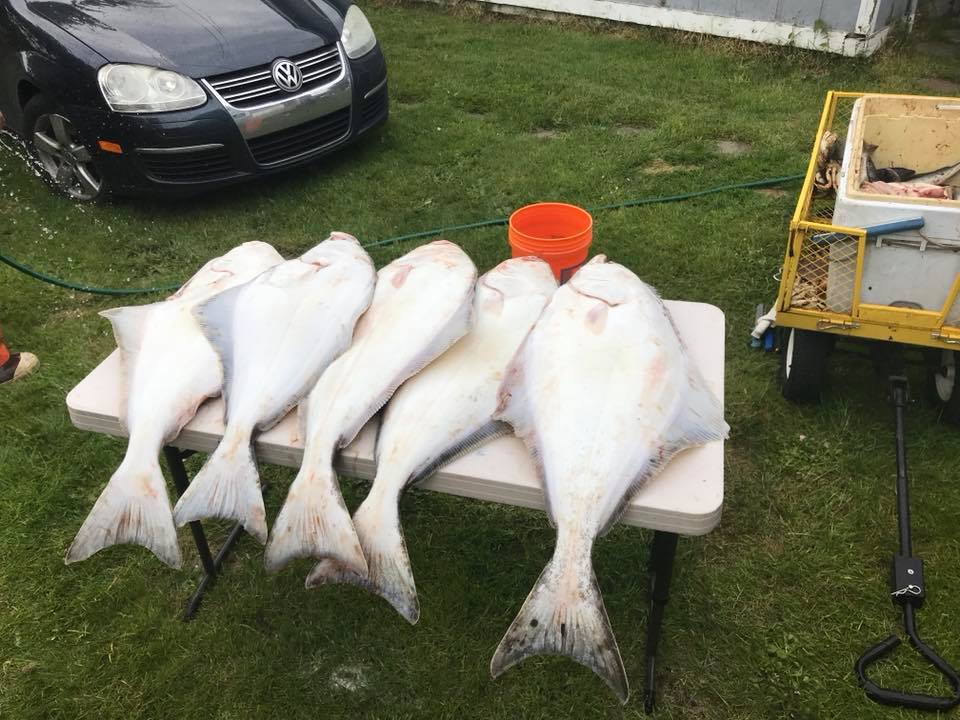
Anglers will get another back-to-back season of late summer halibut fishing off the northern coast, Strait and some inner-Puget Sound (Areas 3-4 and 5-10) beginning Aug. 19.
“Last year, we saw lot of popularity with this late summer halibut fishery, which we had delayed in many areas to support public health and safety during the COVID-19 pandemic,” Heather Hall, a WDFW fish policy manager said in a news release. “By providing these additional fishing dates in August and September again this year, recreational anglers will have the opportunity to access the remaining Washington sport allocation still available after the traditional season in May and June.”
La Push and Neah Bay (Areas 3 and 4) and Strait and Puget Sound (Areas 5 to 10) are open each week on Thursdays, Fridays and Saturdays only from Aug. 19 through Sept. 25 or until the remaining quota is achieved.
In all marine areas daily catch limit is one halibut and no minimum size restriction. Anglers may possess a maximum of two halibut in any form while in the field and must record their catch on a WDFW halibut catch record card. Anglers are limited to four halibut per year. For more information, go the WDFW website at wdfw.wa.gov/fishing/regulations/halibut.
Late summer blooms for yellow perch
Lake Washington – which is 20 miles long and covers more than 22,000 acres – is a great spot at this time of the summer for yellow perch.
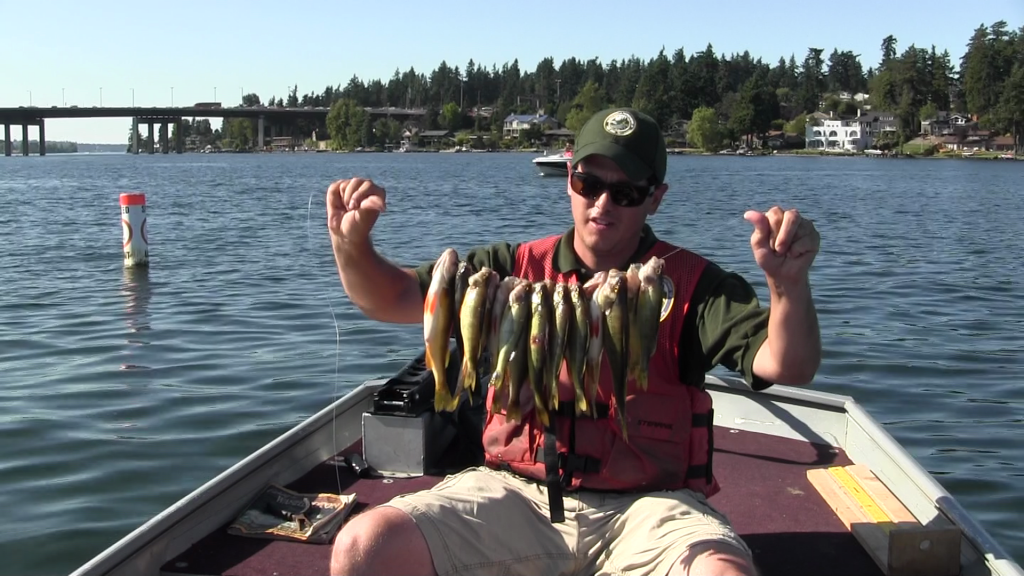
Population levels are strong and annual recruitment and survival rates are so good that there’s no daily catch limit on them. Most yellow perch average 7 to 10 inches along with some “jumbos” hitting the 11- to 12-inch range.
Yellow perch action begins to improve around July when the water heats up, and peaks from August through October.
Look for schools of yellow perch in shallow water, 15 to 35 feet, and close to the shoreline. They prefer covered areas around weed beds, milfoil, aquatic weeds and lily pads or under docks, piers and overhanging trees and brush.
Popular locations to fish are Seward Park; Kenmore log boom and pier; Juanita Bay; Magnuson Park shoreline; Andrews Bay; Newport area and slough; Yarrow Bay; Gene Coulon Park in Renton; Mercer Island near Luther Burbank Park; and off Leschi Park, Madison Park, Stan Sayre’s Pits and Mount Baker Park. Areas from the Montlake Cut into Lake Union are also good especially off Gasworks Park.
A light-to-medium-action trout fishing rod with a spinning reel attached to 4- to 6-pound test line works best. Use a worm and drop-shot (egg-style) weight attached to a three-way swivel or Sniper Lure Snubs – a colorful tiny 3-inch plastic worm. Live maggots, a skirted crappie jig work well. After you catch your first perch cut a small chunk of the meat or even a perch eyeball as bait.
Other good perch lakes are Sammamish near Issaquah; Kapowsin southeast of Puyallup; Beaver and Pine near Issaquah; Sawyer northwest of Black Diamond; Harts southeast of Yelm; Goodwin northwest of Marysville; Stevens east of Everett; American near Fort Lewis; Angle in Sea-Tac; Desire in Renton; and Meridian in Kent.

